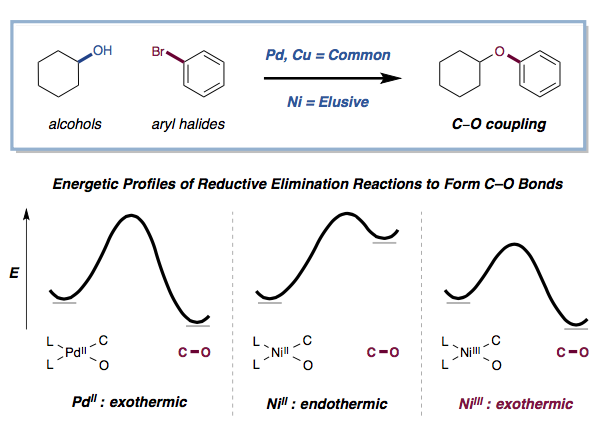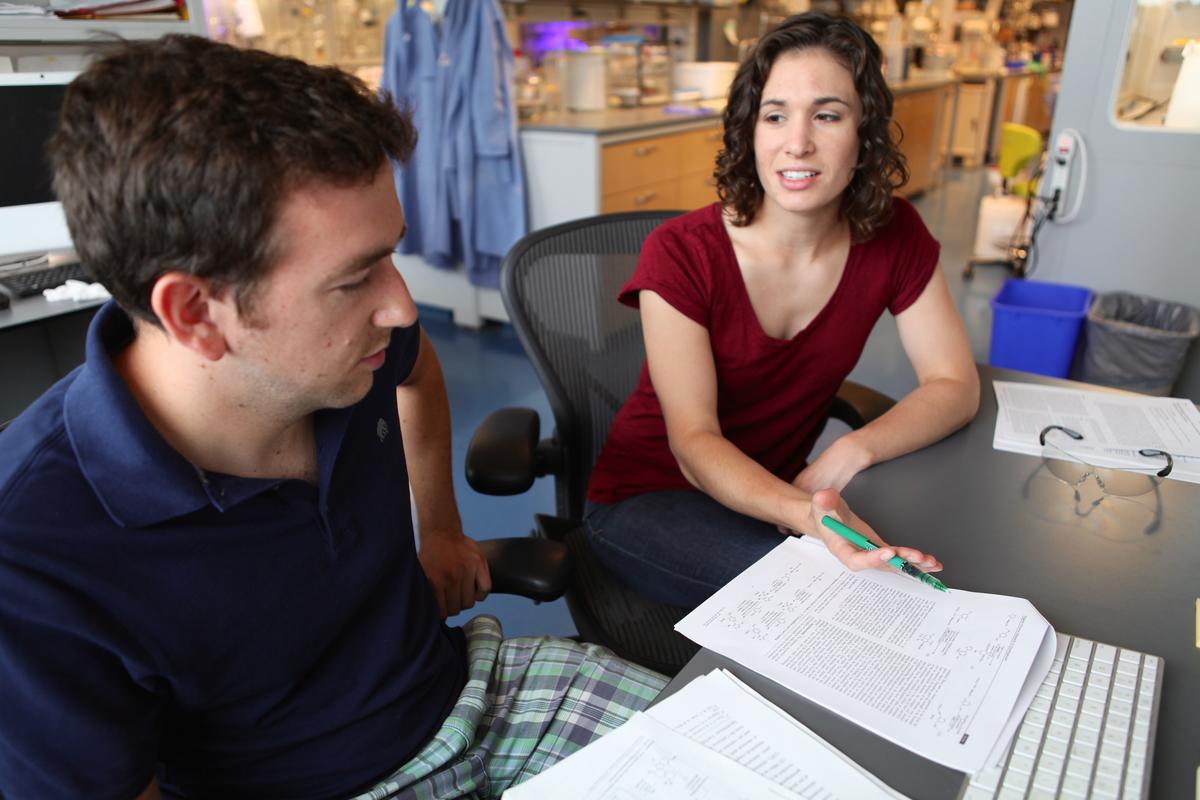Photoredox catalyst unlocks new pathways for nickel
Using a light-activated catalyst, researchers have unlocked a new pathway in nickel chemistry to construct carbon-oxygen (C-O) bonds that would be highly valuable to pharmaceutical and agrochemical industries.
“It was extraordinary to see the reaction go from zero to 91 percent yield just by adding a photocatalyst and switching on a light,” said David MacMillan, the James S. McDonnell Distinguished University Professor of Chemistry and principal investigator of the work published on August 12 in the journal Nature.

The article reported the first general C-O cross-coupling reaction, which connects ring-shaped molecules, called aromatics, to alcohol-containing molecules, using a dual nickel-photoredox catalyst system. Extending nickel’s reach to C-O coupling reactions has great potential given the tremendous impact nickel chemistry has had on analogous C-C coupling reactions.
For the most part, these C-O cross-coupling reactions have been unattainable by traditional nickel catalysis. That’s because the final bonding-forming step—called reductive elimination—in which nickel excises itself to leave behind a C-O bond, is fundamentally unfavorable. By introducing a photocatalyst, the research team was able to remove a single electron from the key nickel intermediate to access an elusive oxidation state of nickel that can readily form the desired bond.
Using a photocatalyst to effectively expand the possible oxidation states of nickel has significant implications beyond this specific transformation. “We assume that it’s not just nickel chemistry that you can dramatically change, but other metals as well,” MacMillan said. “That’s very exciting position to be in.”

To confirm their understanding of how the catalysts worked together to promote the reaction, Valerie Shurtleff, a graduate student in the MacMillan lab and co-author on the paper, performed a series of mechanistic experiments.
Shurtleff synthesized a model nickel complex that mimicked the key bond-forming intermediate, a nickel compound bridging the two coupling partners. She found that without the presence of both light and photocatalyst, the complex was unable to form the product. Further electrochemical experiments confirmed that the model nickel complex was well within the range of molecules with which the photocatalyst could theoretically interact.
The new nickel-photocatalyst combination also offers a mild alternative to similar existing methods that employ palladium or copper catalysts and can access complementary coupling partners.
The MacMillan group has made many major contributions in the area of photoredox catalysis, but has only recently begun discovering the possibilities that arise from combining photoredox with other forms of catalysis, such as nickel. “There are so many different avenues to explore,” Shurtleff said, “we’re really just getting started.”
Read the full article here:
Terrett, J. A.; Cuthbertson, J. D.; Shurtleff, V. W.; MacMillan, D. W. C. “Switching on Elusive Organometallic Mechanisms with Photoredox Catalysis.” 2015, Nature, published online August 12.
This work was supported by financial support from the National Institute of General Medical Services (R01 GM093213-01).
